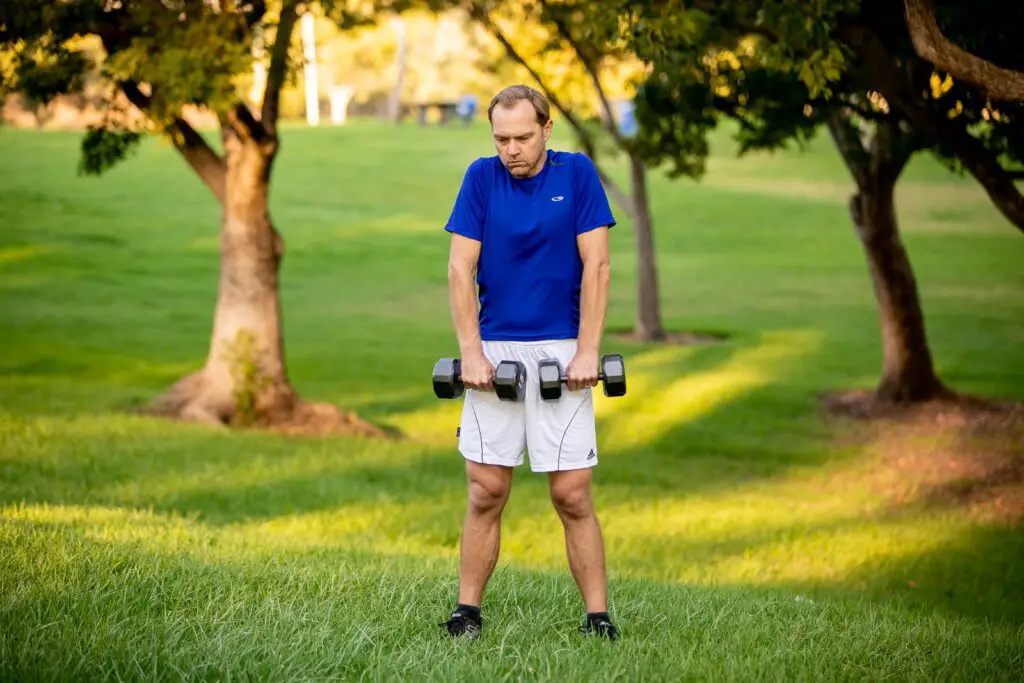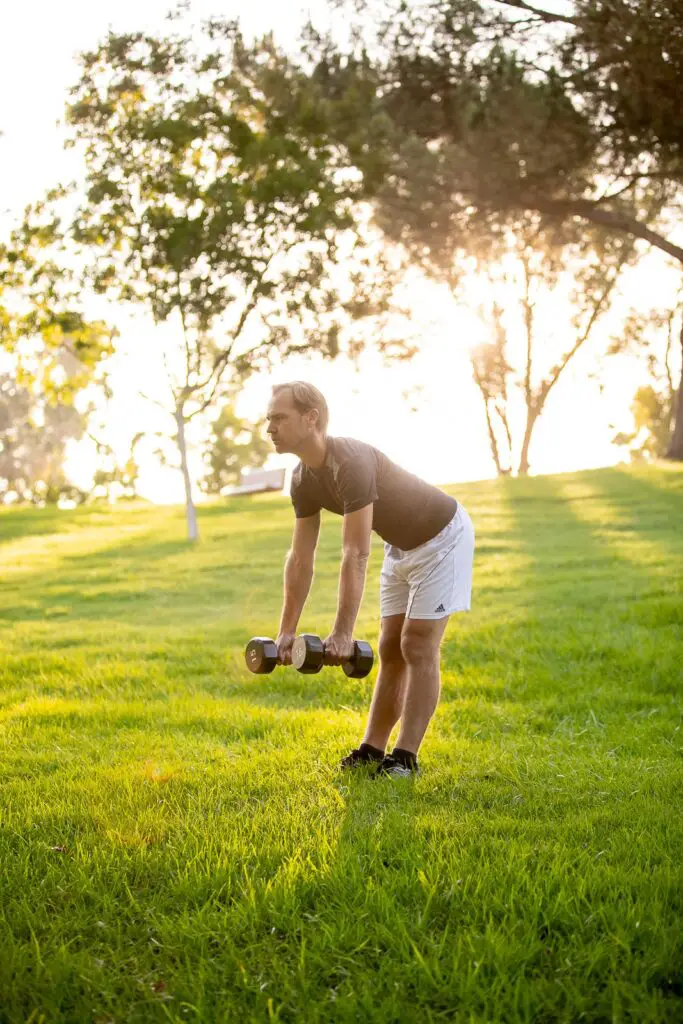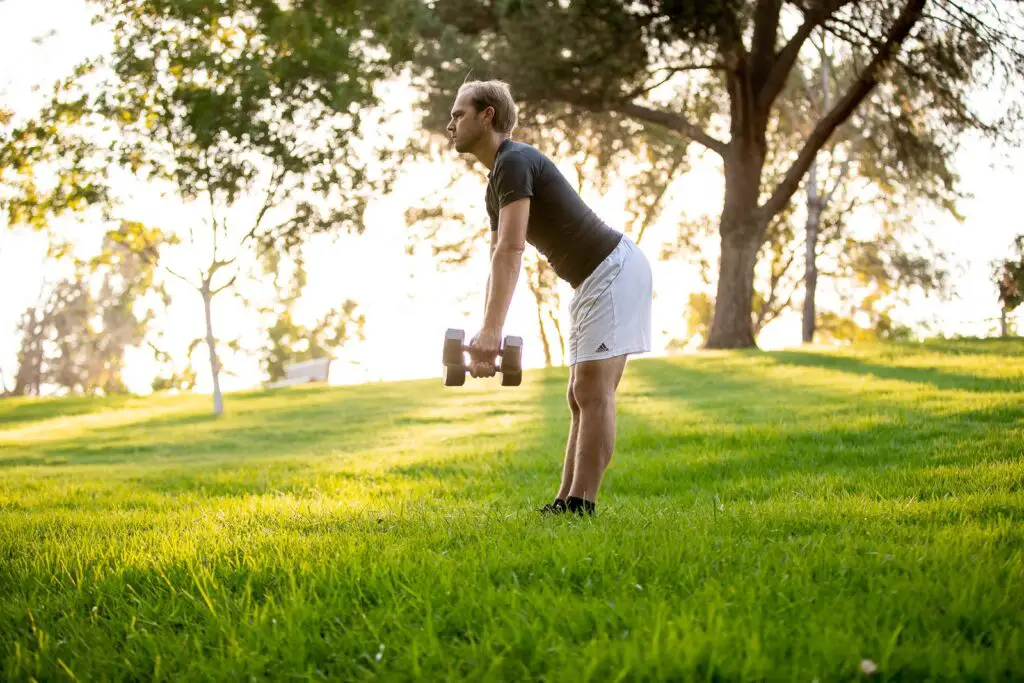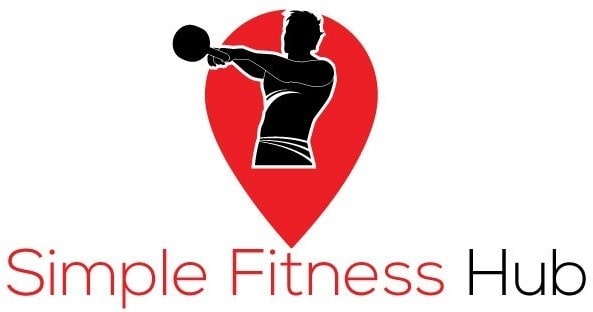Learning how to do pull-ups with dumbbells is a difficult and rather confusing experience. The premise behind the routine is to add more weight to your regular pull-up by adding dumbbells to your weight. Consider incorporating dumbbells to your pull-ups only after you’ve mastered the basic movements.
How To Do Pull-ups With Dumbbells
Before you start, you’ll need to have the following to perform it safely:
- A pull-up bar
- A solid platform
- Some dumbbells
- Workout gloves for better grip and safety (optional)

First, you need to stand on the platform right below the pull-up bar since you can’t jump onto the pull-up bar when you are holding a dumbbell. Pin the dumbbell between your thighs and put your hands on the bar. Extend your legs and perform the pull-up.
Now you can see why it’s difficult to do since the form is difficult to maintain. Especially when you have a dumbbell between your thighs which can fall anytime if you lose your focus. The dumbbell can either land on your foot or damage the floor.
What Exercise Can Replace Pullups?
If you really want to focus on the same muscle groups and all you have are some dumbbells, there are different dumbbell exercises that can effectively replace pull-ups.
Remember pull-ups work the back and arm muscles and the core. Developing those muscles will make you a step closer to doing pull-ups with dumbbells. Use the following exercises to get you there.
Bent-Over Dumbbell Rows
This exercise will also develop your upper back and biceps. These muscle areas are important for making pull-ups with dumbbells. It’s one of the most simple routine that you can do at home. All you need is your dumbbells and a bench to rest on.
First, rest one knee on the bench while placing your opposite foot on the ground with a slight bend in the knee. Allow your arm which is holding the dumbbell to dangle down. Pull your abs in, and then slowly pull your elbow in towards your body, pulling the weight towards your chest.
Slowly release down to your starting position. You can decide the repetitions and sets based on what you can handle or according to your fitness instructor.
Dumbbell Holds
Holding dumbbells in your hands will develop your grip strength which is really important for doing pull-ups with dumbbells. Simply hold your dumbbells for at least 10 seconds.

The dumbbells must feel heavy on your hands to simulate the weight when you attempt to do pull-ups with dumbbells. Increase the time you hold them based on your routine. Make sure you get a firm grip on those dumbbells so as not to drop them.
Hollow Hold
You won’t need any dumbbells for this workout. This exercise will help strengthen your core muscles so they’ll be able to endure when you do pull-ups with dumbbells.
Simply lay down on the ground and extend your legs out in front of you a couple of inches off the ground. Reach your arms behind you a couple of inches off the ground.
Make sure you pull your navel in towards your spine. Keep your back gently pressed towards the ground.
Do Dumbbell Rows Help Pull-Ups?
Dumbbell rows help a lot with improving your ability to do pull-ups. It has the same concept as that of pull-ups with lighter weight. In pull-ups, you pull your whole body against gravity. Dumbbell Rows, on the other hand, will only pull the weight of the dumbbell on your arms. They have the same effects but not the intensity.
You can think of pull-ups with dumbbells as the combination of doing pull-ups and dumbbell rows. You are basically lifting your own weight plus the dumbbell. So doing dumbbell rows definitely help you in pull-ups.
How to Do Pull-Ups for Beginners
If you’re still new to pull-ups then there’s a way to learn it the right and safe way. First off, you should try doing the other workouts mentioned above before trying pull-ups to condition your body. The first thing you are gonna try is an assisted pull up.
Use a bench or platform to act as a support and bring it over close to the pull-up bars. Stand on the bench or platform and grab onto the bars

Hang onto the bars with your legs crossed and tighten your core. This position will make it easier for you to pull yourself up. Lastly, pull yourself up using your arms, back, and core to lift your chin up over the bar. Go down slowly and feel the weight of gravity pushing you down. That’s how you start off doing pull-ups.
How Many Pull-Ups Should I Do a Day?
If you are looking to do pull-ups with dumbbells, then we recommend doing 25-50 pull-ups in any way you can throughout the day or on a single workout. You can do small repetition sets to get you to 25-50 pull-ups easily.
Rotate for the next ten days from odd day workout options and even day pull-up routines. After that, you can take three or four days off from doing pull-ups. Test your body afterward with pull-ups and observe the results. Increase the sets if needed if it feels light to do.
Just because you are doing pull-ups doesn’t necessarily mean you can disregard your other workout plans, you should also follow your daily workout routines and incorporate pull-ups within them.
Conclusion
Doing pull-ups with dumbbells is a fairly difficult workout to do, yet once you condition your body and get the hang of it, it should be doable. Just remember you do it properly and don’t forget to take all necessary preparations to stay safe.
